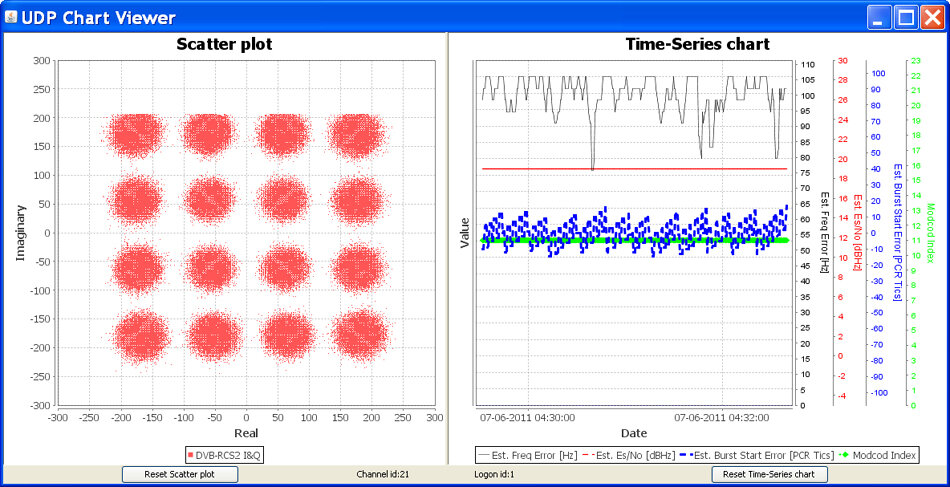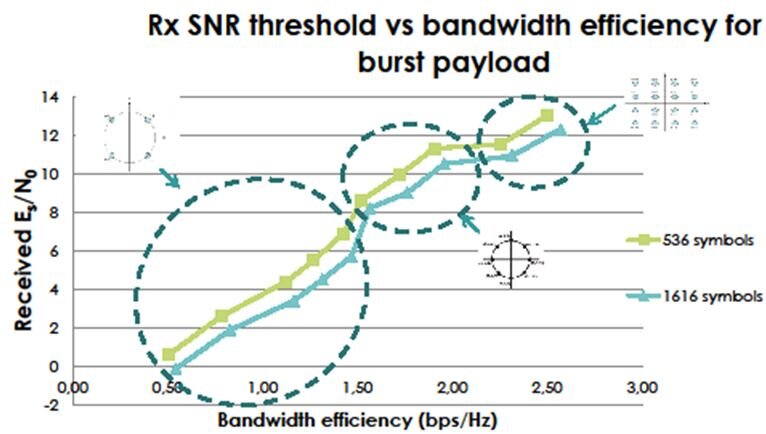ESA research helps set standard for next-generation satellite broadband
Imagine having broadband connectivity available anywhere, anytime, across virtually all of planet Earth.
Satellite-based Internet communications is now reaching terrestrial broadband bandwidth, thanks to a variety of new technologies originated by ESA and taken up by European industry.
Two satcom companies, Italy’s Space Engineering and STM Norway, have unveiled their latest satellite modem prototypes, providing broadband data rates without the need for any terrestrial links.
“Depending on satellite link budgets and other system design parameters, the modems can dynamically provide in excess of 20 Mbit/s download, and up to 5 Mbit/s or more upload,” explained ESA communications engineer Stephane Combes.

“This is typically what a DSL or cable service offers, therefore the satellite service is able to match terrestrial competition, providing what end users would expect from their broadband service today, marking a significant improvement on what satellites services have offered in the past.”
A number of new digital signal processing technologies came together to enable this improved performance:
– Higher-order modulations: mathematical methods of enfolding greater amounts of digital data within the equivalent bandwidth;
– Advanced forward error correction schemes: redundancy-based systems to automatically identify and correct errors without the need for retransmission;
– Adaptive coding and modulation: dynamic matching of signal to the quality of the radio link, as influenced by interference such as rain fade;
– Internet protocol-friendly link layer encapsulation and efficient framing: converting the signal data to Internet standards.
Developed and tested over many years, some of these innovations were initially worked on through ESA’s Basic Technology Research Programme, TRP, which represents ESA’s main ideas factory.
Once experimental proof of concept was achieved, they were taken up by the Agency’s long-running Advanced Research in Telecommunications Systems, ARTES, programme to be brought up to market readiness.
“The technologies developed through these past ESA projects demonstrate far greater bandwidth efficiency, with particularly big gains on the return link – up to 250% compared to previous generations,” added Stephane.
These technologies have now been incorporated in the latest generation of the Digital Video Broadcasting-Return Channel Satellite, DVB-RCS2, industrial standard, published by the European Telecommunications Standard Institute.

The modems were presented during September’s Broadband Modem Technology Workshop, organised by ESA’s Directorate of Technical and Quality Management and Directorate of Telecommunications and Integrated Applications, and bringing together satcom manufacturers, service providers and technical experts.
Additional engineering tools developed by ESA were also demonstrated, being made available to companies in ESA Member States to support their own technology developments.
These include DVB-RCS2 and DVB-RCS Mobile testbeds, developed by Norway’s VeriSat and Space Engineering, respectively, the latter enabling testing of mobile services serving aircraft, ships, trains or cars.
Stephane co-organised the event with Michele Le Saux, ESA’s head of Ground Segment Product and Technology, who commented: “The products showcased are great examples of how our industry is delivering commercially successful products which enable the satcom industry to compete in the global communications sector.”















 Germany
Germany
 Austria
Austria
 Belgium
Belgium
 Denmark
Denmark
 Spain
Spain
 Estonia
Estonia
 Finland
Finland
 France
France
 Greece
Greece
 Hungary
Hungary
 Ireland
Ireland
 Italy
Italy
 Luxembourg
Luxembourg
 Norway
Norway
 The Netherlands
The Netherlands
 Poland
Poland
 Portugal
Portugal
 Czechia
Czechia
 Romania
Romania
 United Kingdom
United Kingdom
 Slovenia
Slovenia
 Sweden
Sweden
 Switzerland
Switzerland




























